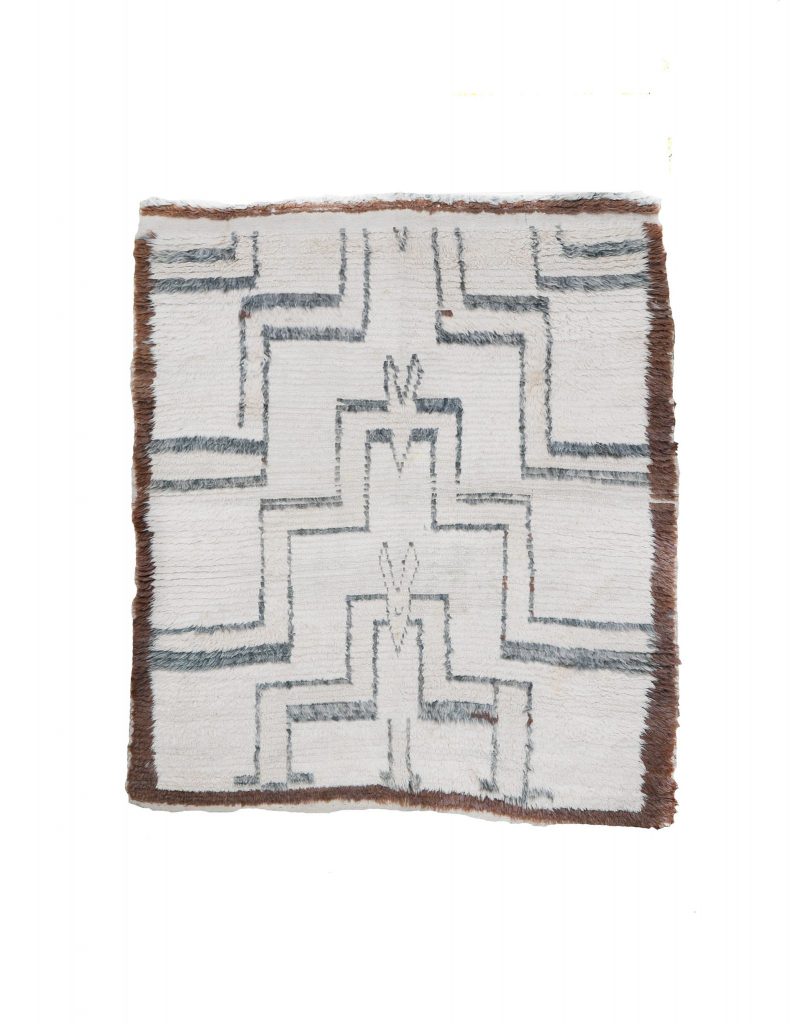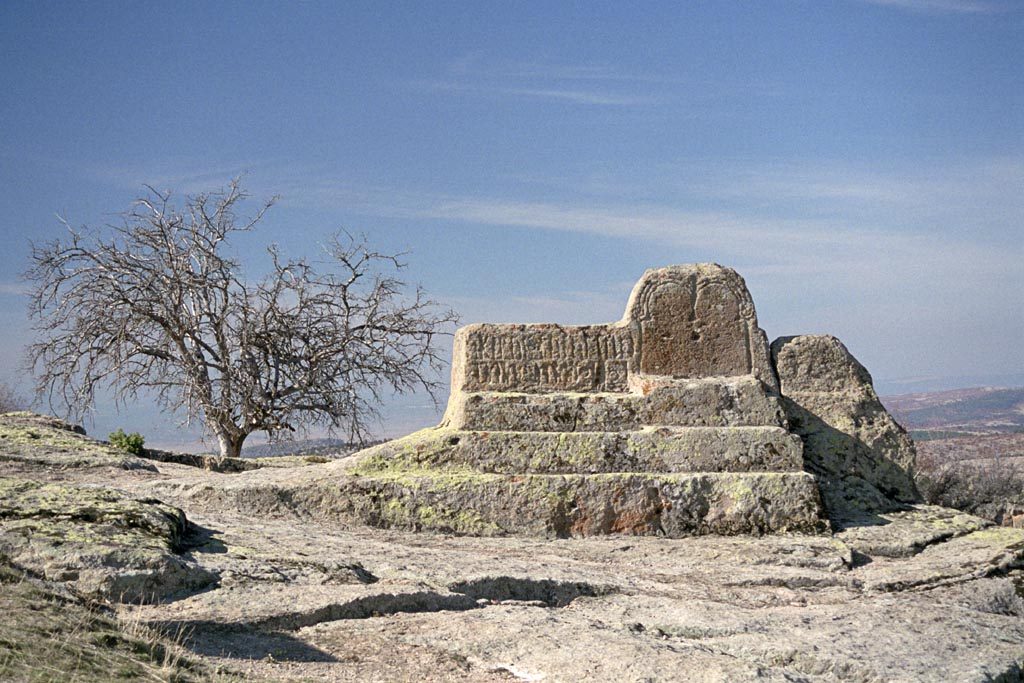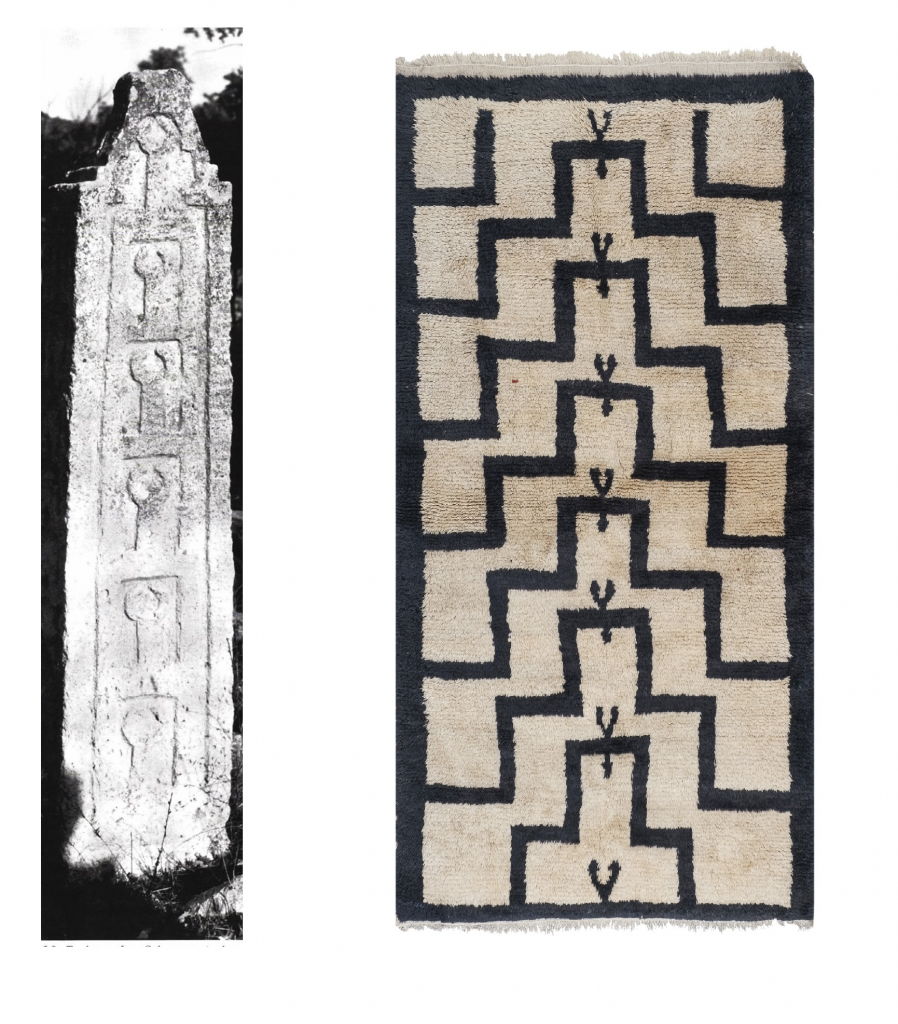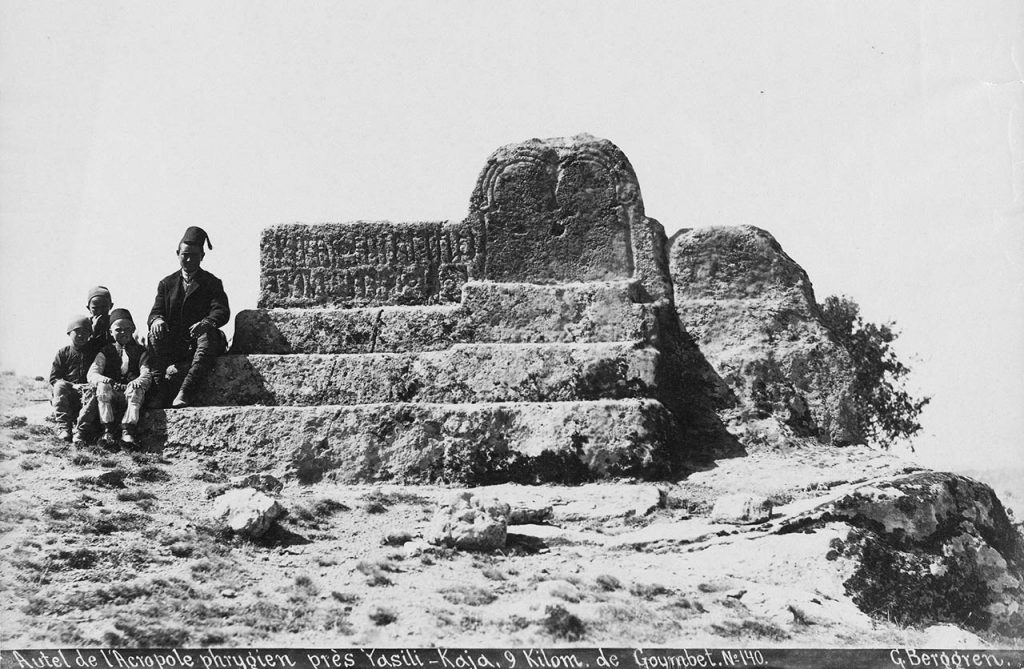
The origin of this design can be traced back to the Phrygian or possibly Hittite civilisations in Anatolia.

The archaic design in this very old Tulu was inspired by the so-called step monuments found in Central Anatolia.
These rock monuments attributed to Phrygian and Hittite civilisation though called ‘thrones’ (e.g. the throne of Cybele, Phrygian Goddess, Mother of the Gods, or throne of Midas) are believed to be altars, or possibly sacrificial altars dating to the Stone Age
Below, the so-called Throne Monument, a Phrygian altar or the throne of Kybele, the Goddess of all Gods, and the inspiration for the archaic ‘ascending arches’ pattern often found in Anatolian rugs

A vertical rendition of the same design, known among the Turkish merchants as ‘bacali’ from the Turkish word ‘baca’ – a chimneystack; evolved likely from the Phrygian tombstones scattered among the ancient ruins of Cappadocia.

to be continued …

